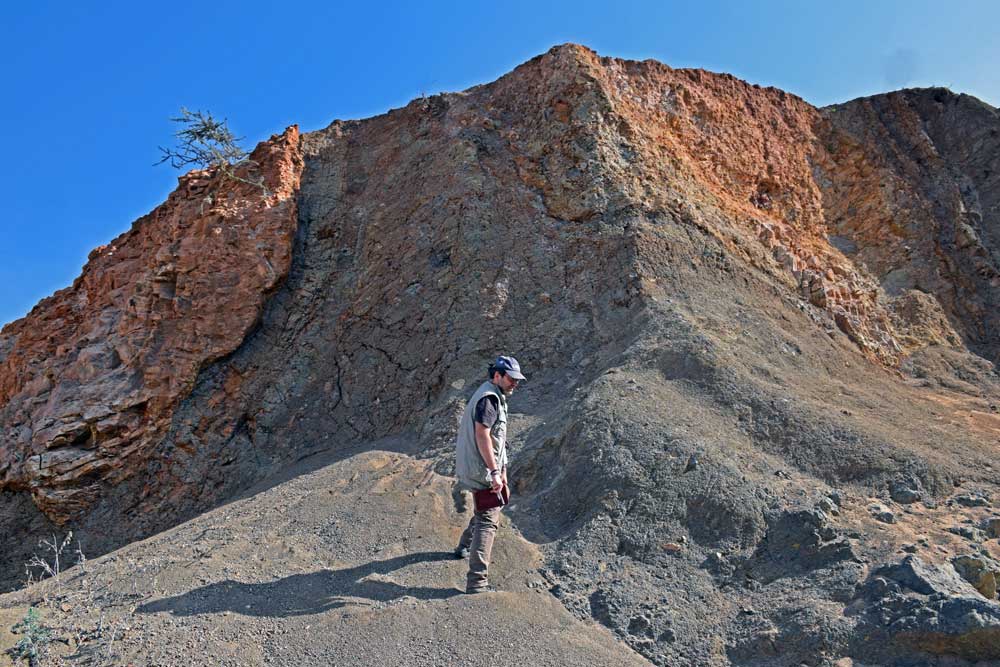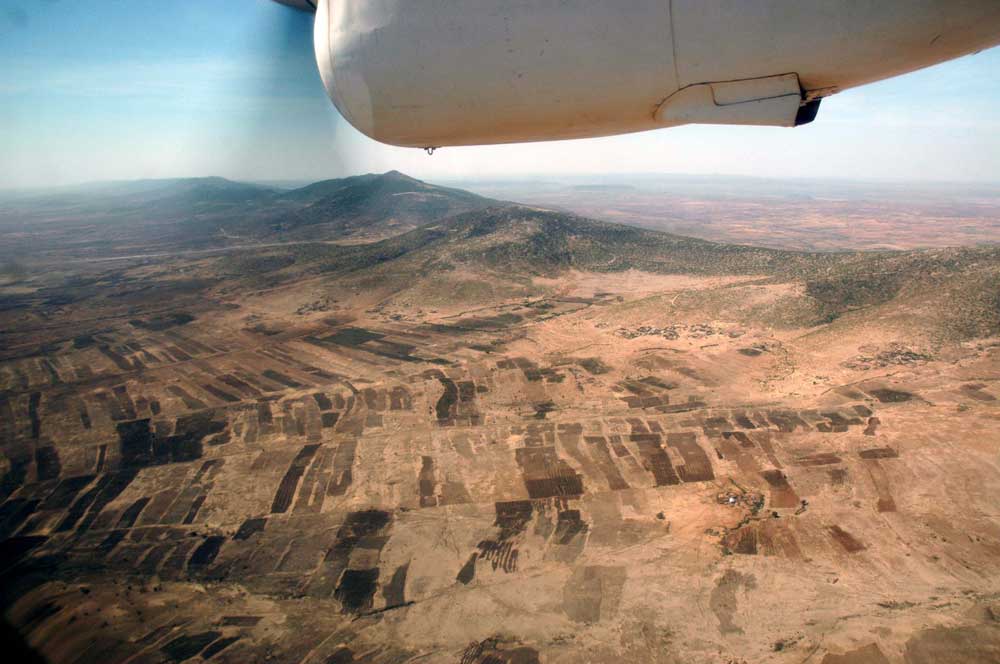Marda Fault Zone
The Marda Fault Zone (MFZ) is an enigmatic structure, extending from the Afar margin over 600 km to the SE and potentially much further. Its apparent projection to the NNW into the Erta Ale axis and the Red Sea, and to the SW into transform zones in the oceanic Somali Basin has prompted several authors to speculate about the controlling influence of the zone in the geodynamic evolution of the Horn of Africa and adjacent Indian Ocean.
Originating as Precambrian mylonite zone and reactivated several times during the Phanerozoic, it is marked by the Marda Range, a chain of eroded hills of Jurassic limestone, capped by a linear basaltic layer which is visible as a prominent dark lineament on satellite imagery. The zone forms a topographic and geological divide between the eroded Mesozoic sediments of the western Ogaden and the sandy plains of Tertiary sediments in the east.
At the Marda Pass, where the Harar/Jijiga road crosses the Marda Range, recently-cut quarries in the Jurassic limestones reveal voluminous subsurface basaltic intrusions of irregular geometry, ranging to over 10 m in width, evidencing intrusive activity in the MFZ. Our Ar40/Ar39 dating indicates 25-23 Ma for this volcanism.
My Nature paper in 1976 provides a very simple description of the MFZ and a more detailed discussion of the volcanism and tectonic significance can be found in our new GSL paper.
Attachments
The Marda Fault Zone (reprint from Nature, 1976) — 178.6 KB PDF File DownloadMajor Dyke Swarm in Ogaden region, south of Afar. — 3 MB PDF File Download
Gravity Anomalies Marda Fault Zone. — 924.3 KB PDF File Download



